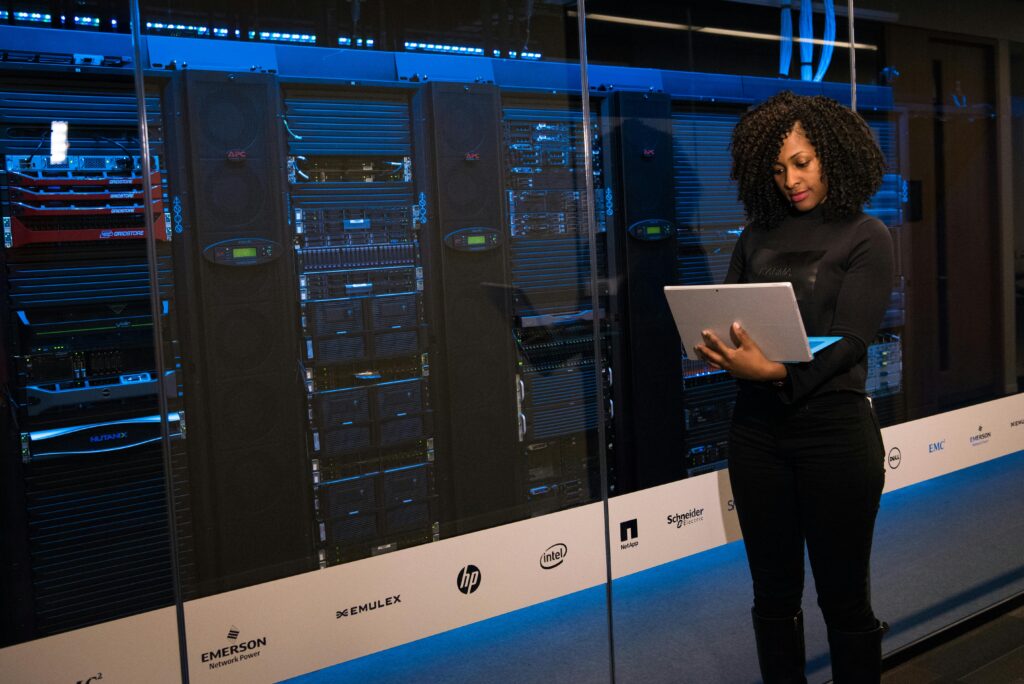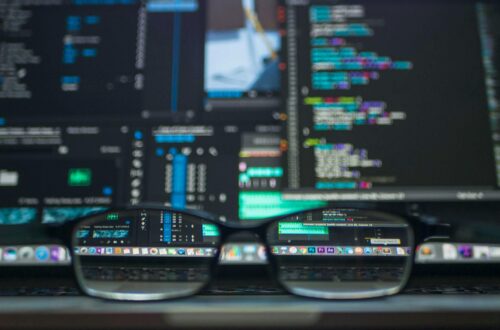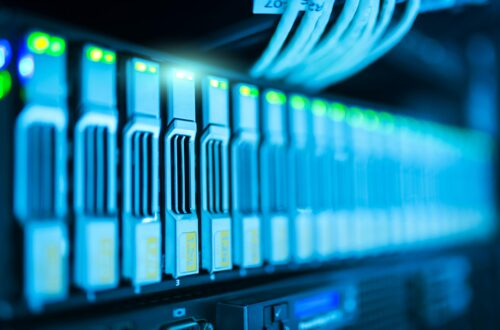In today’s data-driven world, the fields of data science and data analytics have become crucial for businesses and organizations looking to gain insights and make informed decisions.
While these two areas are closely related and often confused, they have distinct differences in their scope, methodologies, and career paths. This comprehensive guide will explore the key differences between data science and data analytics, helping you understand which path might be right for you.
What is Data Science?

Data science is an interdisciplinary field that combines aspects of statistics, mathematics, computer science, and domain expertise to extract meaningful insights and knowledge from large volumes of structured and unstructured data. It goes beyond simple analysis to uncover hidden patterns, predict future trends, and solve complex problems.
The Data Science Process
The data science process typically involves the following steps:
- Problem Definition: Clearly articulate the business problem or question to be addressed.
- Data Collection: Gather relevant data from various sources, both internal and external.
- Data Cleaning and Preprocessing: Prepare the data by handling missing values, outliers, and inconsistencies.
- Exploratory Data Analysis: Investigate the data to uncover patterns, relationships, and anomalies.
- Feature Engineering: Create new variables or transform existing ones to improve model performance.
- Model Building: Develop and train machine learning models to address the problem at hand.
- Model Evaluation: Assess the model’s performance using appropriate metrics and validation techniques.
- Model Deployment: Implement the model in a production environment for real-world use.
- Monitoring and Maintenance: Continuously monitor the model’s performance and update as needed.
The Role of a Data Scientist
Data scientists are often referred to as the “unicorns” of the tech world due to their rare combination of skills. Their primary responsibilities include:
- Developing complex machine learning algorithms and statistical models
- Creating data-driven products and solutions
- Conducting advanced analytics to solve business problems
- Communicating findings to both technical and non-technical stakeholders
- Staying up-to-date with the latest advancements in machine learning and AI
Real-world example: As a data scientist at a large e-commerce company, I once worked on a project to develop a recommendation engine. We analyzed millions of customer interactions, purchase histories, and product attributes to build a model that could suggest personalized product recommendations. This project required a deep understanding of collaborative filtering algorithms, natural language processing for product descriptions, and large-scale data processing techniques.
Data Scientist Skills and Tools
To succeed in data science, professionals need a diverse skill set that includes:
- Programming: Proficiency in languages like Python, R, and SQL
- Statistics and Mathematics: Strong foundation in statistical analysis, linear algebra, and calculus
- Machine Learning: Understanding of various ML algorithms and their applications
- Big Data Technologies: Familiarity with tools like Hadoop, Spark, and NoSQL databases
- Data Visualization: Ability to create compelling visual representations of data
- Domain Knowledge: Understanding of the specific industry or field of application
Common tools used by data scientists include:
- Jupyter Notebooks for interactive coding and analysis
- TensorFlow or PyTorch for deep learning projects
- Apache Spark for big data processing
- Git for version control
- Docker for containerization and deployment
What is Data Analytics?
Data analytics focuses on examining existing datasets to draw conclusions about the information they contain. It involves inspecting, cleansing, transforming, and modeling data to discover useful information, inform conclusions, and support decision-making.
The Data Analytics Process
The data analytics process typically follows these steps:
- Define Objectives: Clarify the business questions or goals to be addressed.
- Data Collection: Gather relevant data from various sources.
- Data Cleaning: Ensure data quality by addressing errors, inconsistencies, and missing values.
- Data Analysis: Apply statistical techniques to identify patterns and trends.
- Data Interpretation: Draw meaningful conclusions from the analysis.
- Data Visualization: Create charts, graphs, and dashboards to communicate findings.
- Reporting: Present insights and recommendations to stakeholders.
The Role of a Data Analyst
Data analysts play a crucial role in helping organizations make data-driven decisions. Their key responsibilities include:
- Collecting and organizing data from various sources
- Identifying trends and patterns in datasets
- Creating reports and dashboards to visualize insights
- Collaborating with stakeholders to understand business needs
- Providing actionable recommendations based on data analysis
Personal experience: In my early career as a data analyst for a retail chain, I was tasked with analyzing sales data to optimize inventory management. By examining historical sales patterns, seasonal trends, and external factors like weather and local events, we were able to develop a more accurate inventory forecasting model. This project taught me the importance of combining quantitative analysis with qualitative insights from domain experts.
Data Analyst Skills and Tools
Key skills for data analysts include:
- Data Analysis: Proficiency in statistical analysis and data manipulation
- Programming: Knowledge of languages like SQL, Python, or R
- Data Visualization: Ability to create clear and impactful visual representations
- Business Acumen: Understanding of business processes and metrics
- Communication: Strong written and verbal skills to convey insights effectively
Common tools used by data analysts include:
- Microsoft Excel for basic data analysis and visualization
- SQL for database querying
- Tableau or Power BI for creating interactive dashboards
- Python libraries like Pandas and NumPy for data manipulation
- Google Analytics for web analytics
Key Distinctions between Data Science and Data Analytics
While there is some overlap between data science and data analytics, several key distinctions set them apart:
Scope and Focus:
- Data Science: Focuses on predictive modeling, machine learning, and developing new algorithms to solve complex problems.
- Data Analytics: Concentrates on descriptive and diagnostic analysis of existing data to provide insights and inform decision-making.
Methodologies and Techniques:
- Data Science: Employs advanced statistical methods, machine learning algorithms, and deep learning techniques.
- Data Analytics: Utilizes statistical analysis, data mining, and business intelligence tools.
Required Skillsets:
- Data Science: Requires a broader and more technical skill set, including advanced mathematics, programming, and machine learning.
- Data Analytics: Focuses more on statistical analysis, data visualization, and business acumen.
Tools and Technologies:
- Data Science: Uses specialized tools for machine learning (e.g., TensorFlow, scikit-learn) and big data processing (e.g., Hadoop, Spark).
- Data Analytics: Relies more on business intelligence tools (e.g., Tableau, Power BI) and statistical software (e.g., SAS, SPSS).
Applications and Use Cases:
- Data Science: Developing recommendation systems, fraud detection algorithms, autonomous vehicles, and natural language processing models.
- Data Analytics: Sales forecasting, customer segmentation, marketing campaign analysis, and financial reporting.
Time Orientation:
- Data Science: Often focuses on future predictions and “what if” scenarios.
- Data Analytics: Typically analyzes historical data to understand “what happened” and “why it happened.”
Data Volume and Complexity:
- Data Science: Often deals with larger, more complex datasets, including unstructured data.
- Data Analytics: Usually works with structured data of moderate size and complexity.
Choosing the Right Career Path
Deciding between a career in data science or data analytics depends on various factors, including your interests, skills, and career goals. Consider the following:
Factors to Consider
- Technical Aptitude: If you enjoy complex mathematical concepts and programming challenges, data science might be a better fit. If you prefer working with established tools and methodologies, data analytics could be more suitable.
- Career Goals: Data science roles often offer higher salaries and more advanced career opportunities, but they also require more specialized skills and education.
- Work Environment: Data scientists often work on long-term research and development projects, while data analysts typically engage in shorter-term analysis tasks.
- Industry Preferences: Some industries, like tech and finance, have a higher demand for data scientists, while others, such as retail and marketing, may have more opportunities for data analysts.
- Educational Background: A strong background in computer science, mathematics, or statistics is often required for data science roles, while data analytics positions may be more accessible with a broader range of educational backgrounds.
Educational Paths and Resources
For aspiring data professionals, there are numerous educational paths and resources available:
Formal Education:
- Data Science: Bachelor’s or Master’s degree in Computer Science, Statistics, or related fields. Many universities now offer specialized Data Science programs.
- Data Analytics: Degrees in Business Analytics, Statistics, or related fields. Some schools offer dedicated Data Analytics programs.
Online Courses and Bootcamps:
- Platforms like Coursera, edX, and Udacity offer comprehensive data science and analytics courses.
- Bootcamps like General Assembly and Springboard provide intensive, practical training.
Certifications:
- Data Science: AWS Certified Machine Learning, Google Professional Data Engineer, IBM Data Science Professional Certificate.
- Data Analytics: Google Data Analytics Professional Certificate, Microsoft Certified: Data Analyst Associate, Tableau Desktop Specialist.
Self-Study Resources:
- Books: “Python for Data Analysis” by Wes McKinney, “The Art of Statistics” by David Spiegelhalter.
- Websites: Kaggle for practical projects, DataCamp for interactive learning.
Community Involvement:
- Attend local meetups or conferences related to data science and analytics.
- Participate in online forums and communities like Reddit’s r/datascience or Stack Overflow.
Personal tip: When I was transitioning into data science, I found that working on personal projects and participating in Kaggle competitions were invaluable for building my skills and portfolio. These experiences not only helped me learn practical techniques but also gave me tangible examples to discuss during job interviews.
The Future Ahead: Trends and Outlook

The fields of data science and data analytics are evolving rapidly, with exciting developments on the horizon:
Growth Potential and Job Prospects:
- The demand for both data scientists and data analysts is expected to grow significantly in the coming years.
- The U.S. Bureau of Labor Statistics projects a 31% growth in data scientist roles from 2020 to 2030, much faster than average.
Emerging Technologies:
- Artificial Intelligence and Machine Learning will continue to play a crucial role in both fields.
- Edge computing and IoT devices will generate new types of data, requiring innovative analysis techniques.
- Quantum computing may revolutionize data processing capabilities in the future.
Importance in the Data-Driven World:
- As organizations become increasingly reliant on data for decision-making, the role of data professionals will become even more critical.
- Data ethics and privacy concerns will likely shape the future of both data science and analytics practices.
Interdisciplinary Applications:
- Data science and analytics are being applied to new fields like healthcare, climate science, and social sciences, opening up novel career opportunities.
Automation and Augmented Analytics:
- While some aspects of data analysis may become automated, human expertise will remain crucial for interpreting results and making strategic decisions.
- Augmented analytics tools will empower non-technical users to perform some data analysis tasks, potentially changing the role of data professionals.
Your Journey to Success Awaits
Whether you choose to pursue data science or data analytics, you’re entering a field with immense potential for growth and impact. Both paths offer rewarding careers that allow you to make data-driven decisions and uncover valuable insights.
Remember that the journey to becoming a successful data professional is ongoing. Continuous learning, staying updated with the latest technologies, and developing your problem-solving skills will be key to your success.
As you embark on this exciting career path, keep these final tips in mind:
- Start with the basics: Ensure you have a solid foundation in statistics, programming, and data manipulation before diving into more advanced topics.
- Build a portfolio: Work on personal projects or contribute to open-source initiatives to showcase your skills to potential employers.
- Network: Connect with other professionals in the field through social media, conferences, and local meetups.
- Stay curious: The world of data is constantly evolving. Cultivate a mindset of lifelong learning to stay ahead of the curve.
- Develop domain expertise: While technical skills are important, understanding the business context of your data is equally crucial.
By understanding the distinctions between data science and data analytics and aligning your skills and interests with the right path, you’ll be well-positioned to thrive in the data-driven future that lies ahead.
Frequently Asked Questions (FAQ)
Which is better: data analyst or data scientist?
There’s no definitive “better” choice – it depends on your interests, skills, and career goals. Data science roles typically offer higher salaries and more advanced career opportunities but require more specialized skills. Data analyst positions may be more accessible and offer a broader range of industry options.
Can a data analyst become a data scientist?
Yes, many data analysts transition to data science roles. This typically involves developing additional skills in advanced mathematics, machine learning, and programming. Pursuing relevant courses, certifications, or even an advanced degree can help facilitate this transition.
Do data analysts make more than data scientists?
Generally, data scientists command higher salaries due to their more specialized skill set. However, salaries can vary widely based on factors like experience, location, and industry. Senior data analysts in some industries may earn more than entry-level data scientists in others.
Will AI replace data analysts?
While AI and automation will likely augment many data analysis tasks, human analysts will remain crucial for interpreting results, providing context, and making strategic recommendations. The role of data analysts may evolve, but their expertise in translating data into actionable insights will continue to be valuable.
Is a data analyst job stressful?
Like any professional role, data analyst positions can have stressful periods, particularly when working on tight deadlines or managing complex projects. However, many find the work intellectually stimulating and rewarding. The level of stress can vary depending on the company culture, industry, and individual responsibilities.





